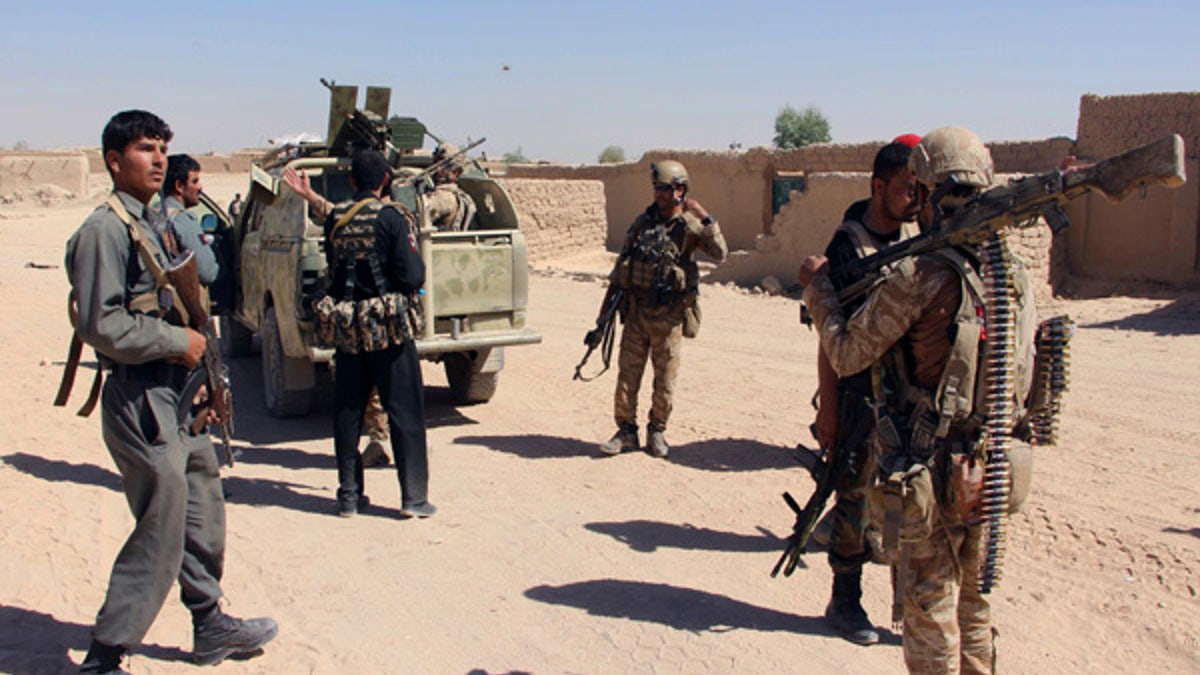
Afghan Special Forces and policemen prepare themselves for battle with the Taliban on the outskirts of Lashkar Gah capital of Helmand, Afghanistan October 10, 2016. REUTERS/Abdul Mailk - RTSRLPZ
The U.S. government is paying the salaries of “tens of thousands” of non-existent Afghan soldiers, police, teachers and civil servants, a top Pentagon official said Wednesday in reporting on the scale and variety of misspent U.S. money.
John Sopko, special inspector general for Afghanistan reconstruction (SIGAR), said the salaries of “ghost soldiers” is just one of many ways Americans' money is wasted in Afghanistan – all for rather modest gains.
His comments summarize a SIGAR report that aims to help inform the new Congress and administration of the most pressing reconstruction challenges in 2017 and beyond. Sopko’s message was one American leaders have heard before.
“Including U.S. war funding unrelated to reconstruction, U.S. appropriations for Afghanistan now totals more than three quarters of a trillion dollars -- not including the $43.7 billion requested for fiscal year 2017,” he said in a speech before the Center for Strategic and International Studies in Washington, D.C.
U.S. taxpayers footing the bill for security at unused ‘Ghost Hotel’ in Kabul
“To date, more than $115 billion of U.S. taxpayer money has been spent, sometimes wisely – too often not. Another $7.5 billion has been appropriated but not yet spent, and international donors have pledged to provide financial support to Afghanistan and its security forces through 2020.”
Despite the huge amounts spent in Afghanistan, conditions are deteriorating.
“As of Aug. 28, 2016, only 63.4 percent of the country’s districts were under Afghan government’s control or influence, a reduction from the 72 percent as of Nov. 27, 2015, Sopko said.
Afghan forces “are generally capable and effective at protecting major population centers, preventing the Taliban from maintaining prolonged control of specific areas and at responding to Taliban attacks.”
But the Afghan military, “a reportedly 320,000-strong force is basically playing ‘whack-a-mole’ following the Taliban around Afghanistan.”
In addition to the military situation, American efforts to curb opium production are failing.

Special Inspector General for Afghanistan Reconstruction John Sopko has shined a spotlight on billions of U.S. tax dollars wasted in the region since taking the position in 2012. (SIGAR HQ)
“Although the United States has committed more than $8 billion to counter-narcotics efforts in Afghanistan, the opium trade has grown significantly since the fall of the Taliban. [The U.S.] estimates that as much as 60 percent of the Taliban’s funding comes from poppy production and cultivation.”
The scale of money spent on Afghanistan since reconstruction efforts began in 2002 mirrors the scale of casualties among U.S. personnel in Afghanistan.
Sopko said “2,247 U.S. military personnel have died in support of operations there, while more than 20,000 others were wounded in action.”
After 15 years, Afghanistan’s government is still in no position to support itself -- and corruption in endemic, he said.
“The percentage of Afghans who believe corruption is a problem of daily life, now 90 percent, has steadily increased over time. In 2016 Afghans paid more in bribes than the government is expected to have generated in revenue from taxes, customs, tariffs and other sources of income.”
There is evidence that the Taliban has instructed its field commanders to simply purchase U.S.-supplied weapons, fuel and ammunition from Afghan soldiers because to do so is both easier and less expensive, Sopko said.
Some of the blame for the wasted military spending, growing drug problem and widespread corruption can be laid on Washington’s doorstep.
“The U.S. contributed mightily to the problem by dumping too much money, too fast, into too small an economy, with too little oversight,” he said.
There have been some improvements because of American efforts to ensure that money is properly spent.
“I was encouraged to hear that, as of this month, Afghan security forces are being paid based on a DOD-developed verification system, known as AHRIMS [Afghan Human Resources Information Management System] that relies upon ID cards embedded with biometric information being registered daily to measure attendance,” he said.




















